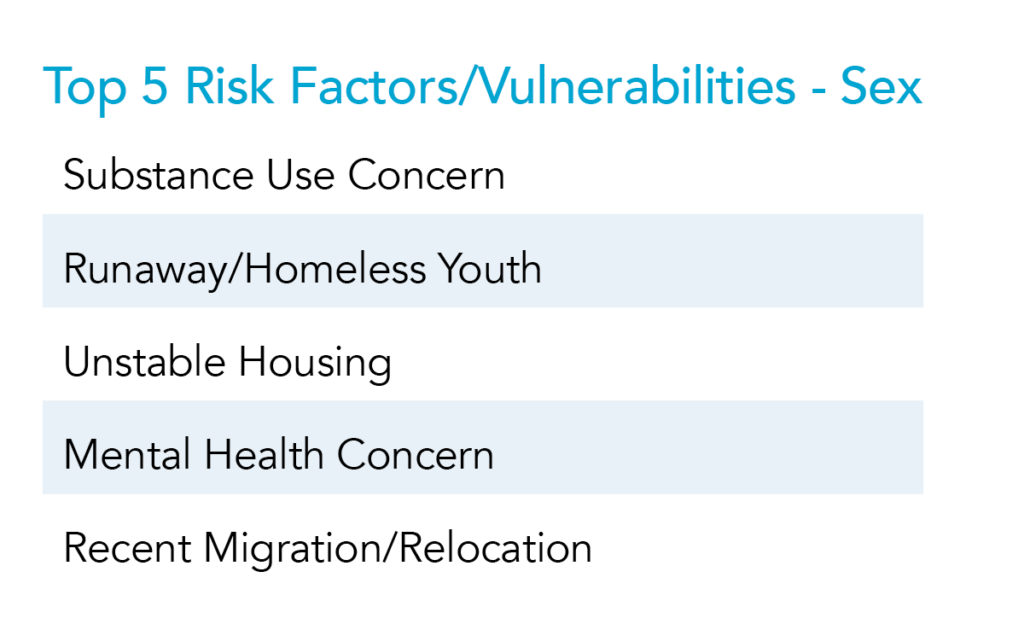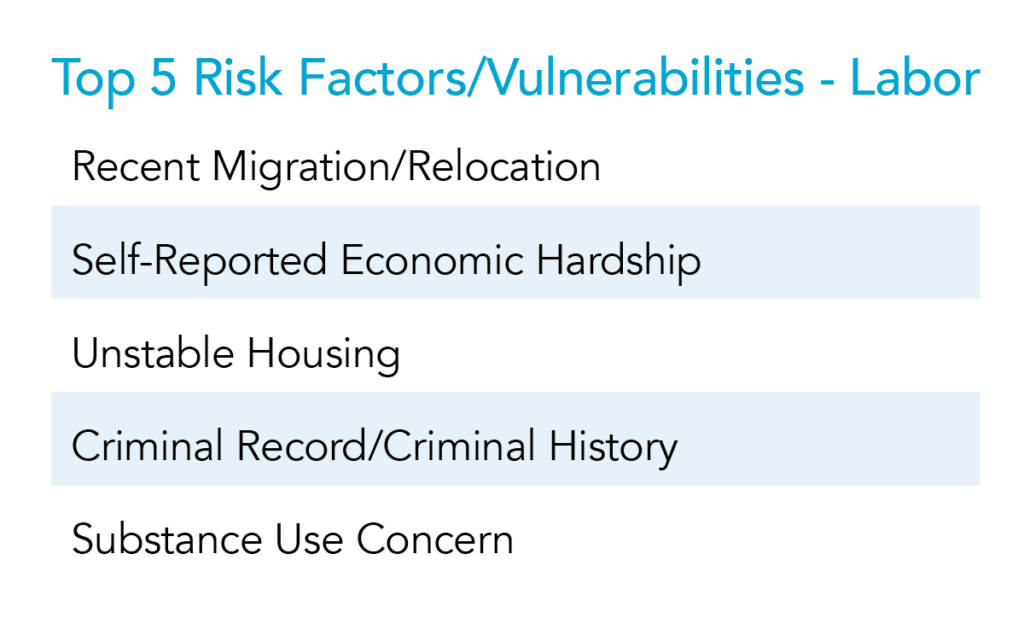Human Trafficking Trends in 2020
All information was collected and shared from The Polaris Project which operates the U.S. National Human Trafficking Hotline. https://polarisproject.org/2020-us-national-human-trafficking-hotline-statistics
In a year when everything from crime to commerce saw dramatic shifts, reports of human trafficking were most notable in 2020 for their consistency. Or, to put it another way, human trafficking appears to be pandemic-proof. That is one of three major categories of findings in Polaris’s analysis of data gathered over the calendar year 2020 from the U.S. National Human Trafficking Hotline.
Number of trafficking situations and victims identified
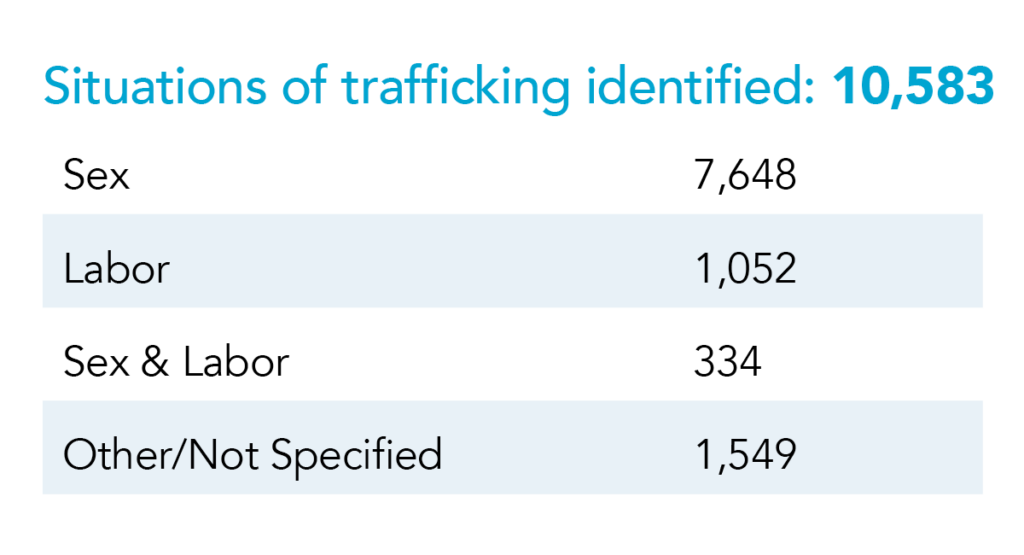
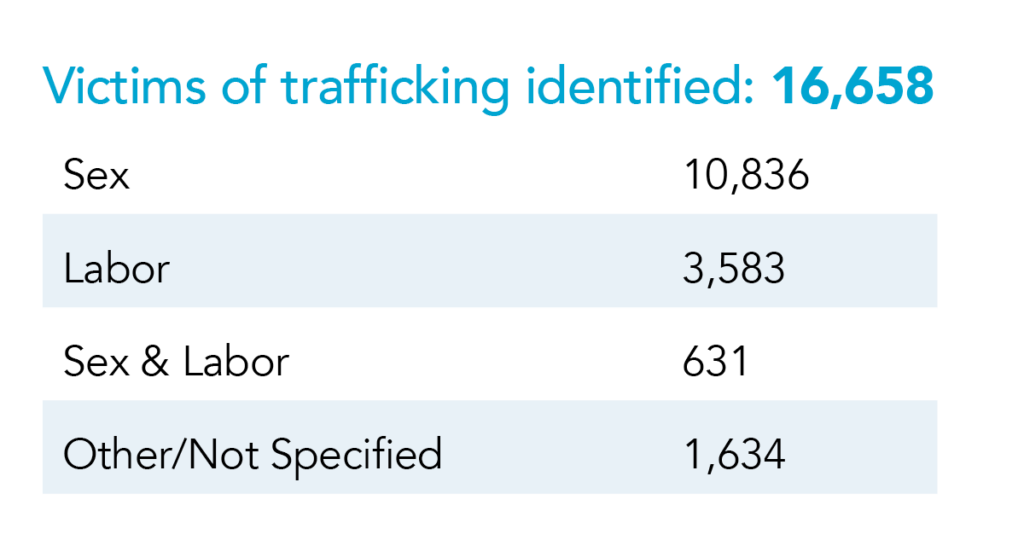
Top types as identified in Typology of Modern Slavery
Polaris analyzed more than 32,000 cases of human trafficking documented between December 2007 and December 2016 through its operation of the National Human Trafficking Hotline — one of the largest data set on human trafficking in the United States ever compiled and publicly analyzed. Polaris’s research team analyzed the data and developed a classification system that identifies 25 types of human trafficking in the United States.
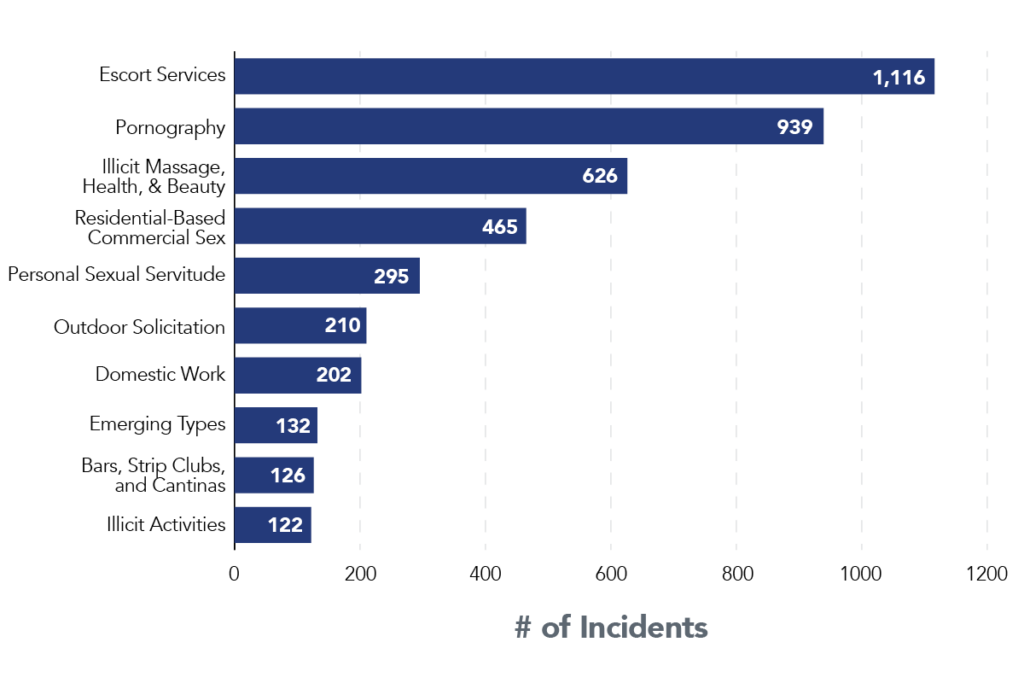
Human trafficking is profoundly adaptable.
Shut down one venue and traffickers will find a new one. Wherever there are vulnerable people and communities, there will be someone who finds a way to exploit them.
Online recruitment increased a significant 22%. During the lockdowns, as the proportion of victims from common recruitment sites such as strip clubs (-46%), foster homes (-70%), and schools (-38%) went down drastically, the internet was reported as the top recruitment location for all forms of trafficking.
Most notably, the analysis found a significant increase in the proportion of potential victims for whom Facebook and Instagram were the sites for recruitment into trafficking (120%). There was a 125% increase in reports of recruitment on Facebook over the previous year and a 95% increase on Instagram.
Human trafficking is highly personal.
Despite the explosion of concern – some of it fueled by misinformation – about complex child sex trafficking schemes and kidnappings, data shows victims usually know and trust their traffickers.
Recruitment by family members and intimate partners was highly reported for all forms of trafficking. While this is the case year over year, it was particularly pronounced in 2020.
In 2020, among all forms of trafficking whose recruitment relationships were known (4,142), the proportion of victims recruited by a family member or caregiver increased significantly – from 21% of all victims in 2019 to 31% in 2020 – a 47% increase.
In addition, the proportion recruited by intimate partners jumped 21% – from 22% in 2019 to 27% in 2020.
Recruitment by family members and intimate partners was particularly noteworthy in sex trafficking situations. In 2020, situations of sex trafficking or sex and labor trafficking combined, of the 2,448 victims whose recruitment was known:
42% were brought into trafficking by a member of their own families.
39% were recruited via an intimate partner or a marriage proposition.
In labor trafficking situations, by contrast, of the 1,572 victims whose recruitment was known:
- 69% were recruited by a potential or current employer.
- 15% were recruited into trafficking by a member of their own family.
- 5% by an intimate partner or marriage proposition.
Friends and family who know something about the victim and the situations are also the most likely to be the way they are connected to help.
Interaction with friends and family has been the top reported access point from 2018 – 2020. In 2020, friends and family were the access point for help for 40% of identified victims (4,098).
This is the case with all types of trafficking and suggests the importance of people with proximity to victims and context in identifying and supporting survivors.
Human trafficking does not happen in a vacuum.
Virtually everyone who ends up in a trafficking situation has a clear and identifiable vulnerability that a trafficker preyed upon. These vulnerabilities show up in roughly the same proportions every year – including the year the pandemic began and lockdowns were at their peak. This data points to massive failings in a range of systems, from the macro, like criminal justice and economic inequity, to the specific, like foster care, immigration, health and housing.
